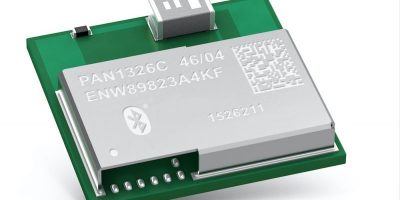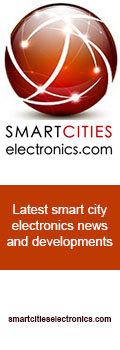HCI Bluetooth module boasts best-in-class RF, says Panasonic
Using Texas Instruments’ CC2564 Bluetooth core IC, the PAN1326C is a host-controlled transfer rates by a factor of 2.5 compared with previous Bluetooth low energy solutions, says Panasonic Industry Europe.
The PAN1326C module is Bluetooth-4.2-compliant and has a tiny footprint of only 85.5mm² (9.0 x 9.5 x 1.8mm). The integration of BT 4.2 secure connecting feature implements ECDH technology, adds Panasonic.
Next to the UART interface the PAN1326C has an audio/voice codec interface which is a dedicated programmable serial port that provides the logic to interface to several kinds of PCM or I2S codecs. It has a wide operating temperature range of -40 to +85°C. The supply voltage range is 1.8 to 4.8V.
The PAN1326C HCI Bluetooth RF module is 100 per cent pin-compatible with previous generations of Texas Instruments-based Bluetooth HCI modules and is Bluetooth 4.2-compliant up to the HCI layer.
In addition to the UART, it has general purpose input/output (GPIO) and PCM interfaces. For Bluetooth operation, it has up to seven active devices, Scatternet and up to three Piconets operating simultaneously, one as master and two as slaves. There are also up to two synchronous connection oriented (SCO) links on the same Piconet.
Support for all voice air-coding provides an assisted mode for HFP 1.6 wideband speech (WBS) profile or A2DP profile to reduce host processing and power (multiple Bluetooth profiles, multiple sniff instances).
The module is versatile, with integral co-existence and prioritisation handling for BR, EDR, and Low Energy Bluetooth variants.
The PAN1326C has capabilities of link layer topology Scatternet, concurrently as peripheral and central, support up to 10 devices.
Panasonic Industry Europe is part of the global Panasonic Group and provides industrial products and services in Europe. As a partner for the industrial sector, Panasonic researches, develops, manufactures and supplies technologies combining engineering expertise from a portfolio covering key electronic components, devices and modules up to production equipment for manufacturing lines across a broad range of industries.




